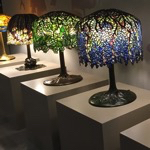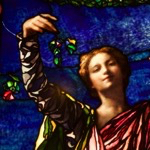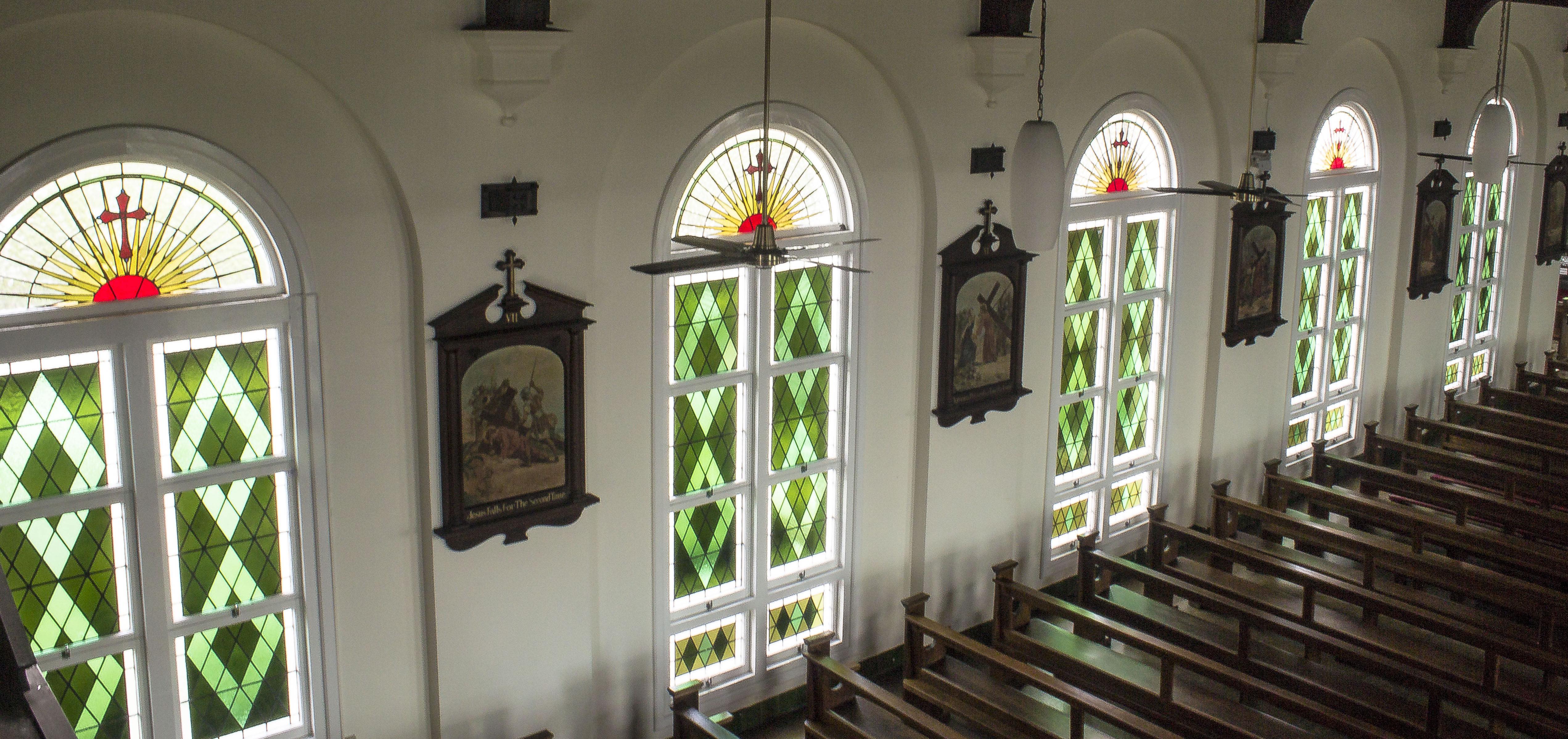I had the pleasure to attend the 2018 Stained Glass Association of America (SGAA) conference in Long Beach, California in late June. It was such a great event (arrived to its 109th instalment), and I had the chance to meet other stained glass artists and conservators, all under one roof.
The conference featured many amazing and inspiring talks. I particularly enjoyed the talk by Judith Schaechter, who showed her work, the processes she uses and her sources of inspiration. I am a big fan of her work, and always enjoying visiting museums or galleries that exhibit her stained glass.

Some of the samples Judith Schaechter showed during her talk.
I also met again with Ariana Makau from Nzilani Glass Conservation, who I had visited few years ago in Oakland, California, for inspiration and insights about stained glass conservation. Ariana’s talk at the conference was focused on health and safety when exposed to lead: a big issue when working with stained glass, and in particular when doing conservation works. The talk flamed up lots of discussion, which demonstrates how important this issue is to stained glass makers and conservators.
Another talk I enjoyed was by Lindsy Parrot, from the Neustadt Collection of Tiffany Glass, in the Queens Museum, New Jersey, who spoke about the mosaics from the Tiffany Studios. I have visited the collection in the Queens Museum few year ago, and I talked about it in this blog post.
The conference also featured a number of classes. I enjoyed taking part to the Laminating class by Rich Lamonde, from Glass Strategies, and to the gilding demonstration by Alix Gomes from Angel Gilding.

One of the pieces I created during the Lamination class at the SGAA conference.

Alix Gomes demonstrating the gilding technique.
The conference featured two banquets; the first took place at the Judson Studios. Before reaching the studio, we visited the Gamble House, a National Historic Landmark in Pasadena. The House is a masterpiece of the American Arts and Crafts movement, and features a strong focus on details and craftsmanship. The design of the house is influenced by Japanese aesthetic. We also visited the Bullseye Resource Centre located next to Judson Studios.

Glass racks at the Bullseye Resource Centre located next to Judson Studios.
Once at Judson Studios, we had the chance to visit the building, and admire some of the work underway by Narcissus Quagliata.

A section of the impressive Judson Studios.
The conference ended with a one day tour of stained glass around the LA area. The tour started with the stained glass windows at the USC Caruso Catholic Center. The windows, recently designed and created by the Judson studio, feature stories from the Old and New Testament. Each window has been sponsored by a donor, who had input on the subject of the window, and provided reference material for example for some of the depicted symbols and faces. The picture below capture some examples of these windows and details.
- The Roski window at the USC Caruso Center.
- Detail of the Roski window
- Detail of the Roski window: an example of input from the donor (the cat belongs to the Roski family)
- The sheep and the lion — a design used by Judson Studios also in the Church of the Resurrection in Leawood, Kansas.
- Another example of a symbol from a donor: a baseball.
- Beautiful faces in the USC Caruso windows
- Beautiful faces in the USC Caruso windows
The tour then continued to the Cathedral of Our Lady of Angels, Los Angeles. In the basement of the cathedral are exhibited a number of stained glass panels by the Franz Mayer & Co of Munich, which where installed in the original Cathedral before being moved to the current location. The panels are beautiful and showcase the artistry of the Mayer studio. I will talk about these windows in a future post, where I will combine pictures taken during this tour with those I took in a previous visit to the Cathedral of Our Lady of Angels.
The tour finished at the Frank Lloyd Wright’s Hollyhock House, which features a number of original stained glass windows in the typical motifs of Frank Lloyd Wright.
I also enjoyed meeting and knowing new people. I thoroughly enjoyed talking with Tom and Gayle Holdman, from Holdman Studios, in Utah. I also enjoyed chatting with David Judson, owner of Judson Studios, one of the biggest and most famous glass art studios in the US. David was a wealth of knowledge about both traditional and new glass art techniques.








 In my 2017 trip to the USA, I made a stop to admire the
In my 2017 trip to the USA, I made a stop to admire the 























































